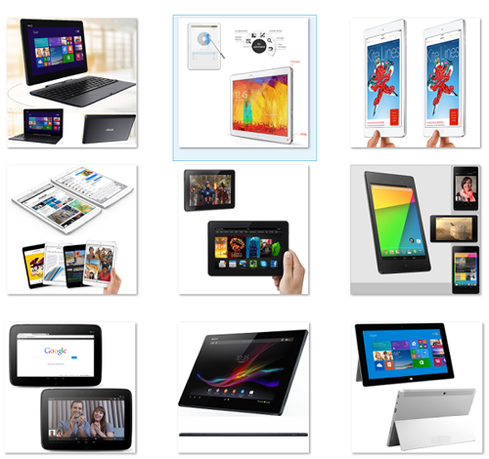Will Phablets Cannibalize Small Tablet Sales?Will Phablets Cannibalize Small Tablet Sales?
Big smartphones may steal sales from smaller tablets as the overall market for tablets is expected to top 221 million this year.


10 Best Tablets Of 2013
10 Best Tablets Of 2013 (click image for larger view)
The tablet market is growing at a healthy pace. It's on track to ship 221.3 million units by the end of the year. That's up 53.5% compared to tablet shipments in 2012, says IDC, though growth is expected to begin to ease up as soon as 2017. IDC reduced its previous tablet forecasts thanks to a new trend: the rise of phablets.
Small tablets arrived after Apple's original iPad and quickly took off. Tablets with seven-inch screens became popular due to their low cost and easy portability. Hardware such as the Samsung Galaxy Tab and the Nexus 7 helped spur the adoption of small-screened tablets. Things might begin to reverse course, however, if the upswing in popularity of phablets is weighed.
Samsung debuted the first true phablet in the fall of 2011 with the Galaxy Note. It followed the Note with the even bigger Note II in 2012 and the Note III in 2013. Other companies followed suit. HTC brought its own six-inch behemoth to market this year, as did LG, Nokia, and Sony. IDC points out that the difference between a six-inch smartphone and a seven-inch tablet isn't significant enough to convince consumers that the smaller tablet is worth higher price. Owners of phablets could be more inclined to go with a full-sized tablet to maximize the difference between their two devices.
{image 1}
[Tablet shopping this holiday season? Here's how to navigate the crowded market: Tablet Shopping Guide: 8 Tips.]
"In some markets consumers are already making the choice to buy a large smartphone rather than buying a small tablet, and as a result we've lowered our long-term forecast," said Tom Mainelli, research director, tablets at IDC. "Meanwhile, in mature markets like the US, where tablets have been shipping in large volumes since 2010 and are already well established, we're less concerned about big phones cannibalizing shipments and more worried about market saturation."
Microsoft is in a good position to take advantage of the potential market swing back toward larger devices. Its Windows 8.1 and Windows RT devices fare better with more screen size. There are very few Windows-based tablets with screen sizes of seven inches. Microsoft probably won't see this benefit anytime soon, however.
Moving forward, Android, iOS, and Windows will be the main three tablet operating systems in use worldwide. At the end of 2013, IDC predicts that Google's Android will hold about 60.8% of the tablet market in terms of operating system share. Apple's iOS will follow with an even 35%, and Microsoft's Windows will trail with 3.4%. By 2017, both Google and Apple will lose share to Microsoft. IDC predicts that Android will run on 58.8% of tablets and iOS will run on 30.6% of tablets by the end of 2017. At that time, Microsoft's Windows OS will grow to about 10.2% of the market.
Consumerization 1.0 was "we don't need IT." Today we need IT to bridge the gap between consumer and business tech. Also in the Consumerization 2.0 issue of information: Stop worrying about the role of the CIO. (Free registration required.)
About the Author
You May Also Like






